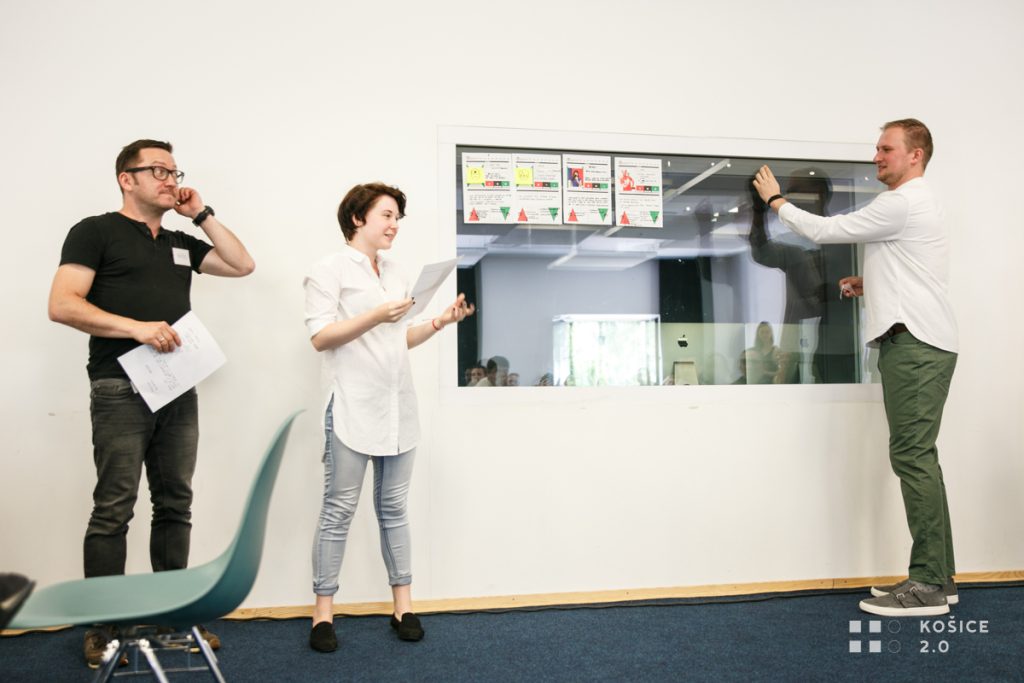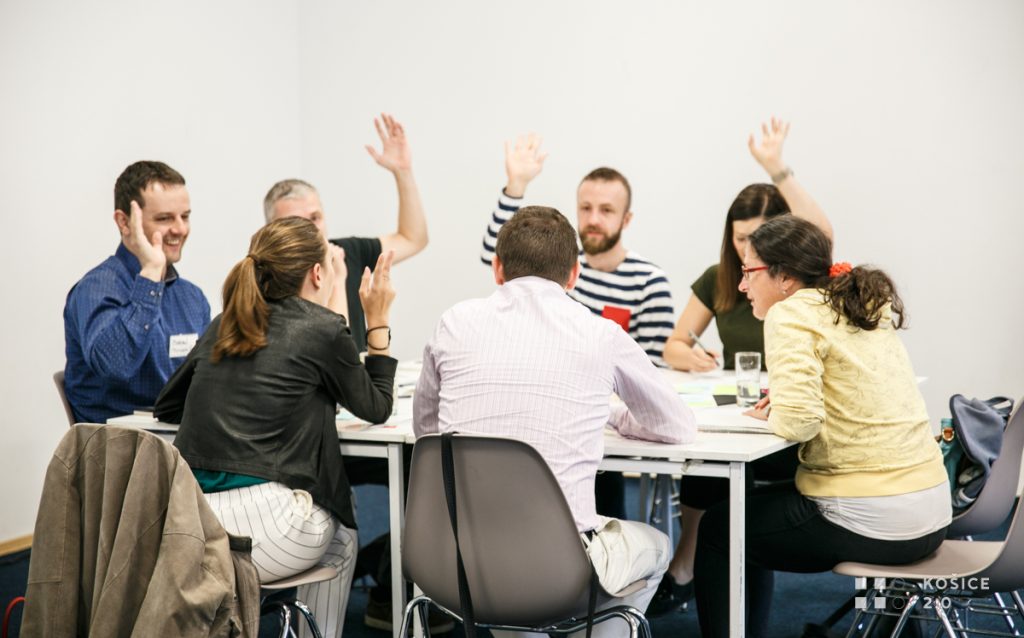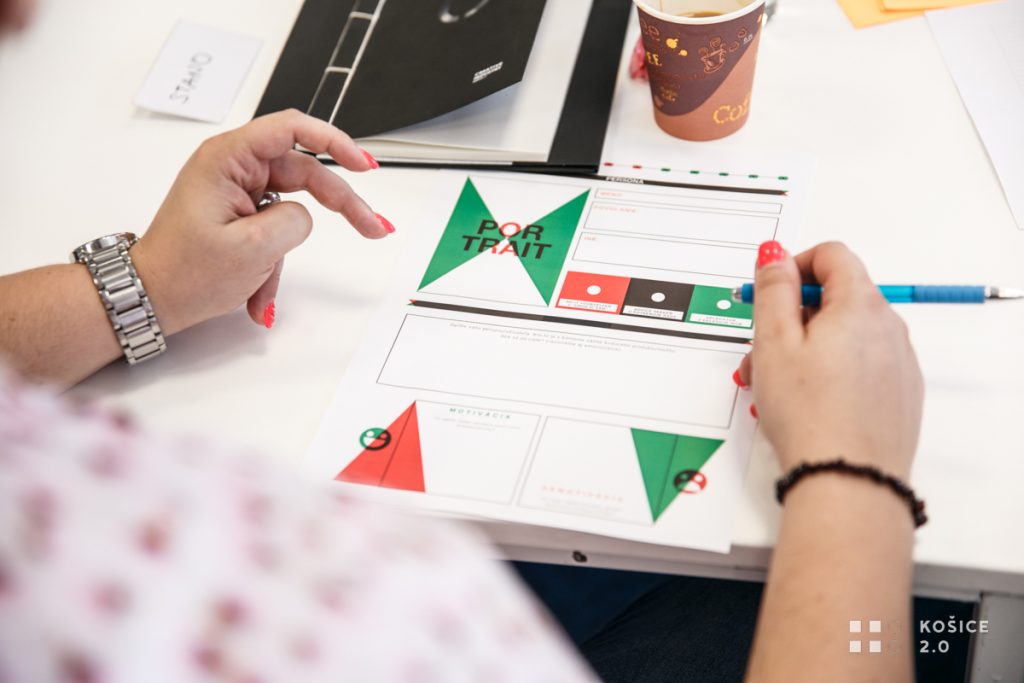A design in the city’s services or how to design innovation that reflects the actual needs of citizens
A design sprint is an intensive workshop where people from many fields meet. Together they look for the best solution to a predefined problem. The workshop’s character encourages creativity and tests the result in real situations. What are the benefits of design thinking, and why does this approach figure in Košice 2.0 project?
Design thinking is a method that is based on the way how designers think and work. They are not only creative and able to come up with many different ideas, but they also try to understand the problems and needs of future users. In this process, it is empathy that is essential. Designers dare to experiment and put their ideas into practice, while every “failure” is something that moves them forward. If the solution doesn’t work, they are not afraid to return to the beginning of the process and start over again, enriched by the experience.
Currently, design thinking is very popular. It can simplify even relatively complicated problems; it is universal and invites all the representatives involved to participate in the creation process. This way, it increases the chances of successfully solving the problem. It seems that it is an ideal way to tackle complex and complicated issues we as a society face nowadays.

When is it good to organize a design sprint?
A company, an organization, or the service provider can face a situation when they need to move forward with an ongoing project; to solve some critical case or more challenging problem. A design approach, creativity, and teamwork can help them solve it.
A design sprint is one of the tools, which design thinking offers. It copies stages of the design process but in an intensive and shortened version. Its great advantage is that it enables us to look ahead in the future, save finances and last but not least time. In this case, the time of the solution creation lasts only a few days compared to months, which is the usual time for a general process of product and service development.
It is essential to include all the users and people connected with the problem in the process. An unquestionable benefit is a space created for a dialogue between all the invited people and experts. Together they work on a joint assignment with the use of well-targeted tools.

Design thinking in the project Košice 2.0
The goal of the design thinking in the project Košice 2.0 is to creatively react to the city’s current challenges and come up with practical solutions based on the data and users’ experience. The first workshop is called Service design sprint and will focus on creative solutions for problems and challenges in designing services.
The city’s services can also be designed in the same thorough way as are the products we use. With the use of design, we can also improve the non-material world. The strength of design thinking is that it focuses on the user. It connects what is desirable from the human’s point of view – the needs and wishes of service users with what is feasible and economically possible. In the case of the project Košice 2.0, the citizen is the final user.

What is the challenge that Service design sprint will present in December?
The first design sprint is focused on the challenge from the area of outreach social service – the nursing service that the city provides through its city boroughs. It is a service aimed at seniors and people with adverse health conditions who need help with daily activities in their home environment. The service includes food delivery, shopping, or accompanying them to doctors.
There are various reasons why it is essential to look for solutions to improve this service. Firstly, it is a general increase in the median age of citizens. Even though it is a positive phenomenon, it will eventually increase the number of people who will need such services in the future. It creates pressure on the quality, effectiveness, and capacity of social services. Secondly, it is the pandemic and its adverse effects on seniors, who are very vulnerable in these times.

What does a design sprint look like?
A sprint generally deals with one challenge or a problem on which a team of people from different fields and experiences works together to find a solution. They present it in the form of a prototype, which is possible to test on real users.
In the case of the outreach social service case, it will be a prototype of a digital solution that we will test with citizens and employees of the city of Košice. They can further develop it and include it in the city administration.
A sprint is led by a facilitator or a sprint master, who coordinates the whole process, and is responsible for the activities to be finished in a predetermined time.

So what is the contribution of design sprints for participants and the city of Košice?
The idea behind design sprints is for all the participants and involved people to benefit from them. The goal is to make the process of providing services more effective, which will help the employees who provide or coordinate the service and, on the other hand, positively affect the users’ experience of the service and enhance their quality of life.
Participants will be in the center of the intensive creative process. Therefore, they will have a chance to share their ideas and test them in practice. Moreover, during the teamwork, they will get to know people they might never meet otherwise. Last but not least, they will express their responsibility for the city of Košice and its citizens.
Since the sprint aims to bring real improvement, the city representatives are involved in the design sprint process, and they co-decide which solutions and ideas are the best. It increases the chances that the final prototype will be further developed and included in the city’s administration, positively impacting the quality of life of people in Košice.
Service design sprint will happen ONLINE on 6th to 7th and 9th to 10th December 2021.

